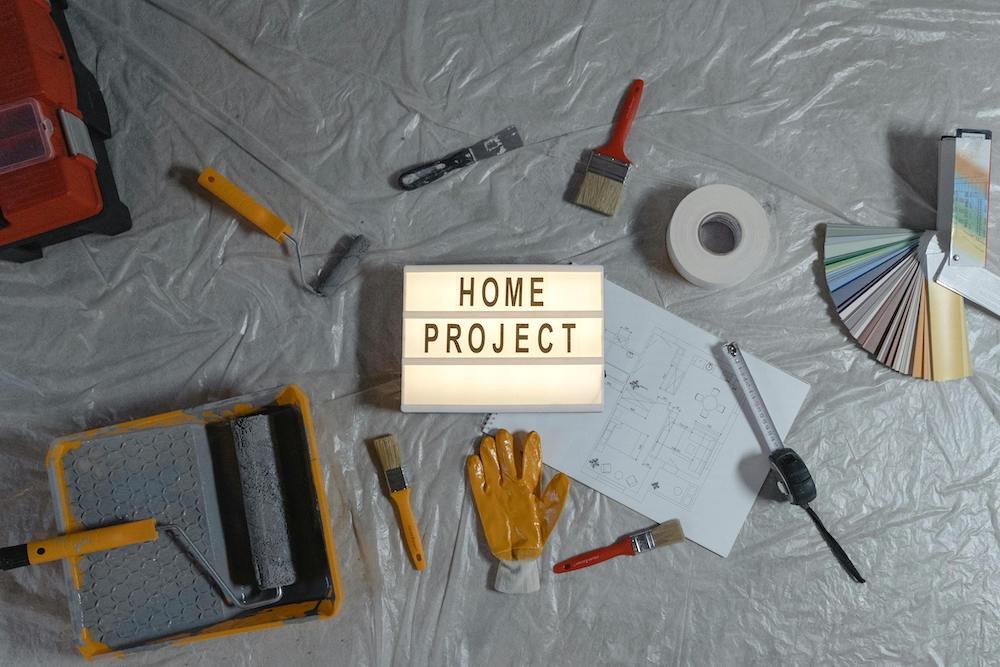Maintaining a home can often feel like a full-time job along side that work-from-home job, but with some strategic planning and a proactive approach, you can significantly cut down on the time and effort needed. From addressing common wear and tear to adopting preventive measures, there are numerous ways to simplify home care and make life easier.
This article explores the top ways to reduce maintenance demands in your home while keeping everything running smoothly.
Invest in Durable, Low-Maintenance Materials
When building or renovating your home, selecting durable and low-maintenance materials can make a substantial difference in the long run. Floors, countertops, and siding made from high-quality materials are not only visually appealing but also designed to withstand wear and tear.
For flooring, consider options like luxury vinyl planks or ceramic tiles, which are resistant to scratches, stains, and moisture. These materials are easy to clean and maintain over the years. For countertops, quartz is an excellent choice due to its non-porous surface that resists stains and doesn’t require sealing like granite.
When it comes to exterior siding, materials such as fiber cement or vinyl are weather-resistant and require minimal upkeep compared to wood, which often needs repainting or refinishing. By prioritizing durable materials during your next upgrade, you can significantly reduce the need for repairs and maintenance.
Water is essential for daily living, but the quality of water flowing through your home can significantly impact your appliances, fixtures, and overall maintenance routine. Hard water, for instance, can lead to the buildup of minerals in plumbing, reduced efficiency of water heaters, and unsightly stains on sinks and showers.
One effective way to combat these issues is through water softener installation, which helps minimize mineral deposits and extends the lifespan of appliances.
By reducing the negative effects of hard water, this simple addition can lower the frequency of repairs and cleaning tasks, saving you both time and money. Furthermore, softened water reduces the need for harsh cleaning products, contributing to a healthier home environment. Investing in this system is a proactive step toward a more maintenance-free living experience.
Upgrade to Smart Home Technology
Smart home technology not only enhances convenience but also helps you stay on top of routine maintenance. Devices like smart thermostats, leak detectors, and automated irrigation systems can prevent small issues from escalating into major problems.
A smart thermostat, for example, optimizes energy use by learning your temperature preferences and adjusting accordingly, which reduces strain on your HVAC system. Leak detectors placed near water sources like sinks and water heaters can send alerts to your phone if a leak is detected, allowing you to address the issue promptly before it causes significant damage.
Additionally, automated irrigation systems with rain sensors ensure your lawn is watered only when necessary, preventing overwatering and reducing water bills. These smart solutions provide peace of mind and require minimal manual intervention, making them excellent tools for maintaining a hassle-free home.
Simplify Landscaping with Low-Maintenance Options
A well-maintained yard enhances your home’s curb appeal, but it doesn’t have to require constant effort. Opting for low-maintenance landscaping choices can drastically reduce the time spent on yard work.
Native plants are an excellent choice for landscaping as they are adapted to the local climate and require less water, fertilizer, and care compared to exotic species. Incorporate drought-resistant plants and ground covers to minimize watering needs, and consider using mulch to suppress weeds and retain soil moisture.
Hardscaping features like stone pathways, patios, or gravel areas can also lower maintenance by replacing grass that needs regular mowing and upkeep. Combining these strategies creates an attractive outdoor space that is easy to maintain.
Regularly Service Major Appliances
Preventive care is key to keeping appliances in top shape and avoiding costly repairs. Scheduling routine maintenance for appliances like your HVAC system, refrigerator, and water heater can identify potential issues early and prolong their lifespan.
For HVAC systems, replacing filters every few months ensures they run efficiently and keeps your indoor air clean. Annual inspections by professionals can catch problems before they escalate. Similarly, cleaning the coils of your refrigerator and checking seals for leaks will improve its efficiency and reduce the risk of breakdowns.
Water heaters, especially in areas with hard water, benefit from periodic flushing to remove sediment buildup. These small yet consistent maintenance tasks save you from unexpected appliance failures and the inconvenience they bring.
Streamline Cleaning with Proactive Strategies
Reducing the time spent cleaning is another effective way to lower overall home maintenance. By incorporating proactive strategies, you can prevent messes and keep your home looking its best with minimal effort.
For example, using doormats at entry points and implementing a “shoes-off” policy can significantly reduce dirt and debris tracked into the house. In high-traffic areas, place washable rugs or runners to protect flooring from wear and tear.
For windows and mirrors, applying anti-streak treatments or using self-cleaning glass technology can minimize the need for frequent cleaning. Similarly, opting for washable, stain-resistant furniture fabrics and slipcovers simplifies cleaning and keeps your interiors looking fresh.
Organize and Declutter Your Space
A clutter-free home is easier to maintain, as it allows you to clean and organize without unnecessary obstacles. Start by decluttering areas that tend to accumulate items, such as closets, pantries, and garages. Donate or discard items you no longer use to create more space and reduce dust-collecting surfaces.
Implement storage solutions like shelving, baskets, and drawer organizers to keep belongings tidy and easily accessible. Labeling storage containers and assigning specific zones for items can make it simple to locate and put things away, reducing the likelihood of clutter building up again.
Seal Gaps and Insulate
Proper insulation and sealing play a crucial role in maintaining a comfortable and energy-efficient home while reducing maintenance needs. Gaps and cracks in doors, windows, and walls can lead to drafts, higher energy bills, and potential pest infestations.
Use weatherstripping and caulking to seal gaps around windows and doors, and consider upgrading to energy-efficient windows for better insulation. Insulating your attic and walls not only improves temperature regulation but also prevents moisture buildup, which can lead to mold and structural issues. These measures protect your home’s integrity and cut down on long-term repair needs.
All in all, reducing home maintenance starts with strategic choices that prevent problems before they occur. Whether it’s investing in durable materials, upgrading to smart home technology, or incorporating low-maintenance landscaping, every step contributes to a more manageable living space.
Full disclosure: She Owns It partners with others through contributor posts, affiliate links, and sponsored content. We are compensated for sponsored content. The views and opinions expressed reflect those of our guest contributor or sponsor. We have evaluated the links and content to the best of our ability at this time to make sure they meet our guidelines. As links and information evolve, we ask that readers do their due diligence, research, and consult with professionals as needed. If you have questions or concerns with any content published on our site, please let us know. We strive to only publish ethical content that supports our community. Thank you for supporting the brands that support this blog.



















Leave a Reply